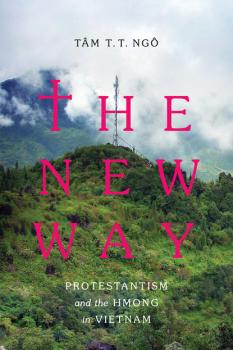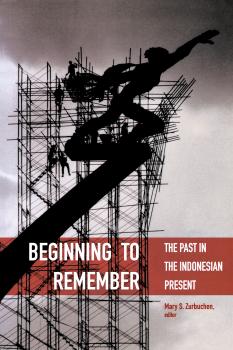ТОП просматриваемых книг сайта:
Critical Dialogues in Southeast Asian Studies
Скачать книги из серии Critical Dialogues in Southeast Asian StudiesАннотация
Despite competing with much larger imperialist neighbors in Southeast Asia, the Kingdom of Thailand—or Siam, as it was formerly known—has succeeded in transforming itself into a rival modern nation-state over the last two centuries. Recent historiography has placed progress—or lack thereof—toward Western-style liberal democracy at the center of Thailand’s narrative, but that view underestimates the importance of the colonial context. In particular, a long-standing relationship with China and the existence of a large and important Chinese diaspora within Thailand have shaped development at every stage.As the emerging nation struggled against colonial forces in Southeast Asia, ethnic Chinese entrepreneurs were neither a colonial force against whom Thainess was identified, nor had they been able to fully assimilate into Thai society. Wasana Wongsurawat demonstrates that the Kingdom of Thailand’s transformation into a modern nation-state required the creation of a national identity that justified not only the hegemonic rule of monarchy but also the involvement of the ethnic Chinese entrepreneurial class upon whom it depended. Her revisionist view traces the evolution of this codependent relationship through the twentieth century, as Thailand struggled against colonial forces in Southeast Asia, found itself an ally of Japan in World War II, and reconsidered its relationship with China in the postwar era.
Информация о книге
Автор произведения Wasana Wongsurawat
Аннотация
Arguing that our definition of Islamic journalism is too narrow, this study examines day-to-day journalism as practiced by Muslim professionals at five exemplary news organizations in Malaysia and Indonesia.At Sabili, established as an underground publication, journalists are hired for their ability at dakwah, or Islamic propagation. At Tempo, a news magazine banned during the Soeharto regime, the journalists do not talk much about sharia law; although many are pious and see their work as a manifestation of worship, the Islam they practice is often viewed as progressive or even liberal. At Harakah reporters support an Islamic political party, while at Republika they practice a �journalism of the Prophet.� Secular news organizations, too, such as Malaysiakini, employ Muslim journalists. Janet Steele explores how these various publications observe universal principles of journalism and do so through an Islamic idiom.
Информация о книге
Автор произведения Janet Steele
Аннотация
The Black Flags raided their way from southern China into northern Vietnam, competing during the second half of the nineteenth century against other armed migrants and uplands communities for the control of commerce, specifically opium, and natural resources, such as copper. At the edges of three empires (the Qing empire in China, the Vietnamese empire governed by the Nguyen dynasty, and, eventually, French Colonial Vietnam), the Black Flags and their rivals sustained networks of power and dominance through the framework of political regimes. This lively history demonstrates the plasticity of borderlines, the limits of imposed boundaries, and the flexible division between apolitical banditry and political rebellion in the borderlands of China and Vietnam.Imperial Bandits contributes to the ongoing reassessment of borderland areas as frontiers for state expansion, showing that, as a setting for many forms of human activity, borderlands continue to exist well after the establishment of formal boundaries.
Информация о книге
Автор произведения Bradley Camp Davis
Аннотация
In the mid-1980s, a radio program with a compelling spiritual message was accidentally received by listeners in Vietnam’s remote northern highlands. The Protestant evangelical communication had been created in the Hmong language by the Far East Broadcasting Company specifically for war refugees in Laos. The Vietnamese Hmong related the content to their traditional expectation of salvation by a Hmong messiah-king who would lead them out of subjugation, and they appropriated the evangelical message for themselves.Today, the New Way (Kev Cai Tshiab) has some three hundred thousand followers in Vietnam. Tam T. T. Ngo reveals the complex politics of religion and ethnic relations in contemporary Vietnam and illuminates the dynamic interplay between local and global forces, socialist and postsocialist state building, cold war and post–cold war antagonisms, Hmong transnationalism, and U.S.-led evangelical expansionism.
Информация о книге
Автор произведения Tâm T. T. Ngô
Аннотация
Mapping Chinese Rangoon is both an intimate exploration of the Sino-Burmese, people of Chinese descent who identify with and choose to remain in Burma/Myanmar, and an illumination of twenty-first-century Burma during its emergence from decades of military-imposed isolation. This spatial ethnography examines how the Sino-Burmese have lived in between states, cognizant of the insecurity in their unclear political status but aware of the social and economic possibilities in this gray zone between two oppressive regimes.For the Sino-Burmese in Rangoon, the labels of Chinese and Tayout (the Burmese equivalent of Chinese) fail to recognize the linguistic and cultural differences between the separate groups that have settled in the city—Hokkien, Cantonese, and Hakka—and conflate this diverse population with the state actions of the People’s Republic of China and the supposed dominance of the overseas Chinese network. In this first English-language study of the Sino-Burmese, Mapping Chinese Rangoon examines the concepts of ethnicity, territory, and nation in an area where ethnicity is inextricably tied to state violence.
Информация о книге
Автор произведения Jayde Lin Roberts










